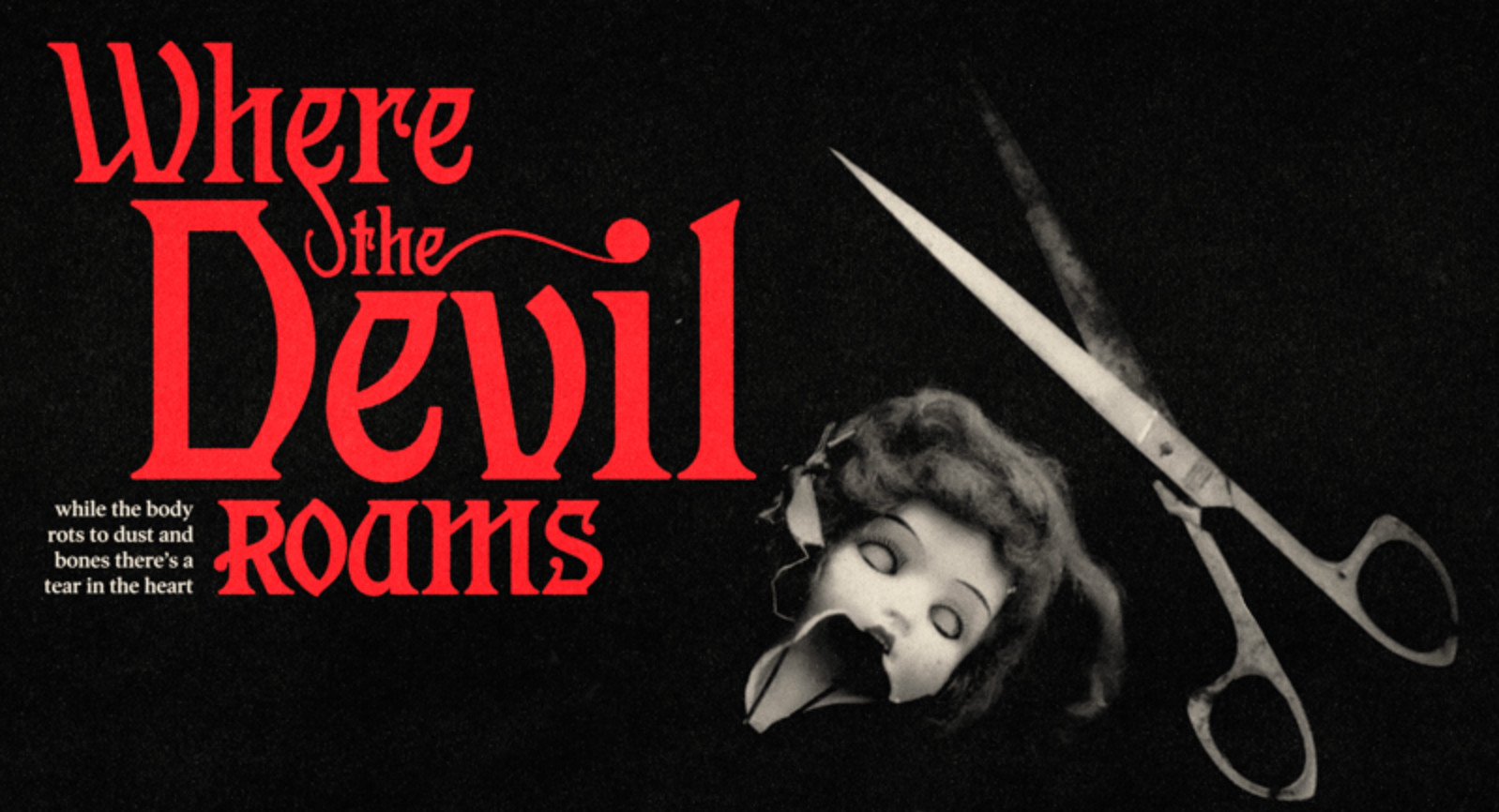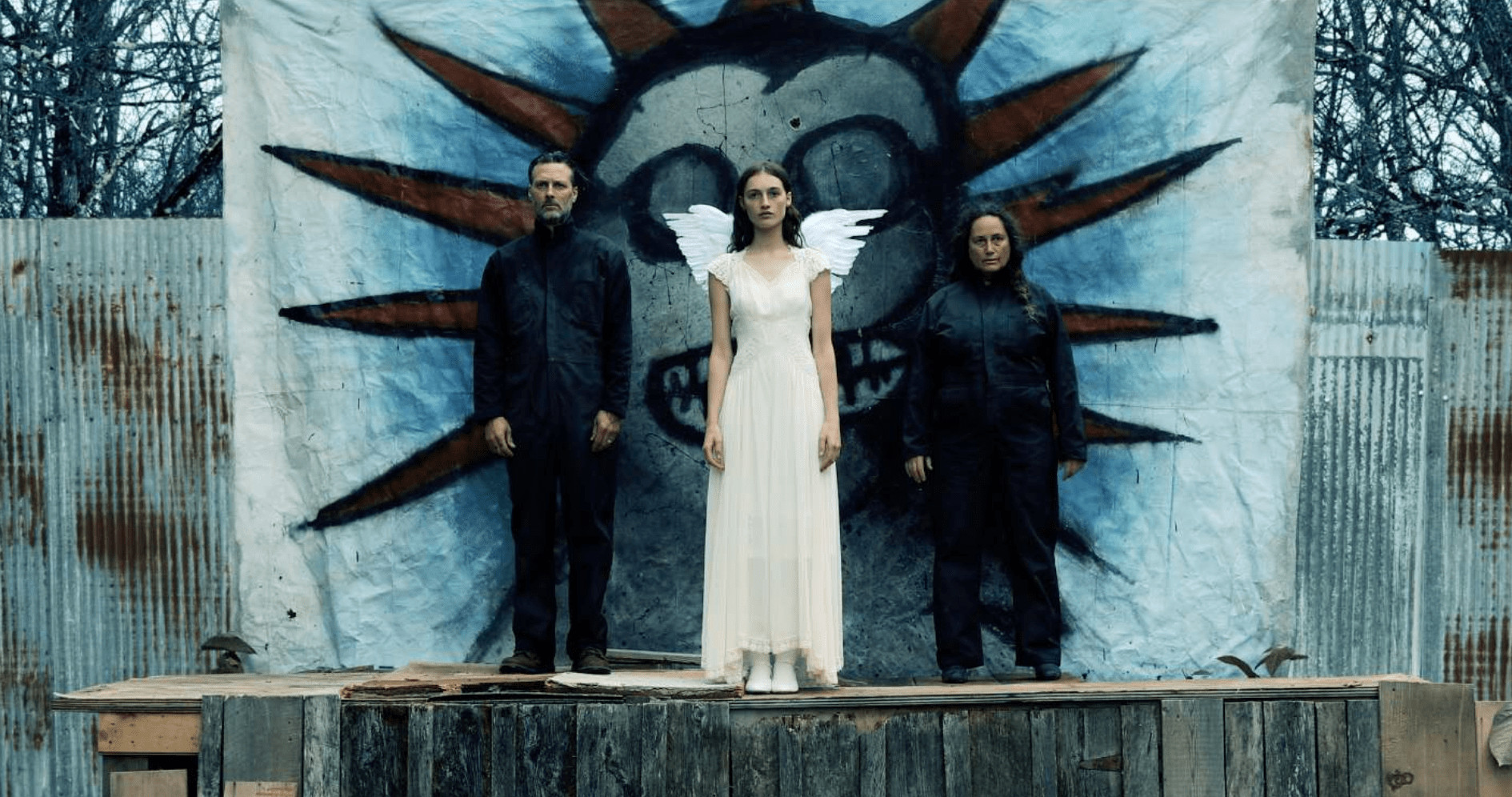Where the Devil Roams emerges as a standout indie horror film of 2023, a testament to the ambitious storytelling and unique vision of the Adams Family, known for their previous work Hellbender. This modestly budgeted feature plunges viewers into the grim era of the Depression, following a family of carni serial killers traversing the carnival circuit. Their seemingly innocuous song and dance act serves as a chilling facade for their murderous spree, with stepmother Maggie (Toby Poser) often at the forefront of the violence, while daughter Eve (Zelda Adams) documents the gruesome aftermath through photography. Father Seven (John Adams), haunted by wartime PTSD and aversions to blood, typically remains distanced until the carnage subsides. This unconventional family dynamic is the film’s strength, drawing us into the lives of these damaged individuals, who are essentially killing time as they seek a more compelling performance.
One of the most striking aspects of Where the Devil Roams is its remarkably cohesive audio-visual experience. The evolving and devolving cinematography, the authentic production design sourced from thrift stores, and the cast, adorned with tattoos and piercings and possessing genuine acting talent, collectively construct a believable faux vintage rockabilly world. In genre films, particularly horror, visual style often overshadows performance quality, especially on a limited budget. Prioritizing a specific “look” can lead to compromised acting. However, Where the Devil Roams breaks this mold. The lead and supporting actors not only embody the aesthetic but also deliver compelling performances, breathing life into these fractured characters. Coupled with an atmospheric 90s rock soundtrack, the film at times evokes the feeling of a feature-length music video, reminiscent of late-night MTV airwaves.
 Maggie and Eve in Where the Devil Roams, showcasing the film's vintage aesthetic
Maggie and Eve in Where the Devil Roams, showcasing the film's vintage aesthetic
These diverse influences, combined with disturbingly realistic practical effects, converge into a surreal narrative that occasionally transforms into a visual poem. The family’s pact with the devil elevates their carnival act to shocking new heights—but at a steep price. The film introduces a fictional mythology centered around a devil artifact that grants the power to detach and reattach limbs, and even reanimate the dead. This macabre ability becomes crucial when a home invasion takes a dark turn, setting the stage for the film’s unsettling final act. The conclusion of Where the Devil Roams defies expectations, delivering a powerful and resonant emotional impact.
 A tense scene from Where the Devil Roams, highlighting the film's suspenseful atmosphere
A tense scene from Where the Devil Roams, highlighting the film's suspenseful atmosphere
Where the Devil Roams distinguishes itself as a thinking person’s alternative to Terrifier 2. While embracing gore and violence, it equally prioritizes story depth, atmosphere, and captivating, unsettling performances. The film’s exploration of unique mythology and consistently striking visual style is particularly impressive for a low-budget period piece. The immersive narrative and meticulous production design ensure that the audience remains fully engaged, without any jarring inconsistencies. In an indie horror landscape often saturated with throwback slashers and gratuitous gore, Where the Devil Roams is a refreshing and blood-soaked gasp of originality. It stands as a unique entity, offering a commentary on poverty and the plight of the overlooked and marginalized.

